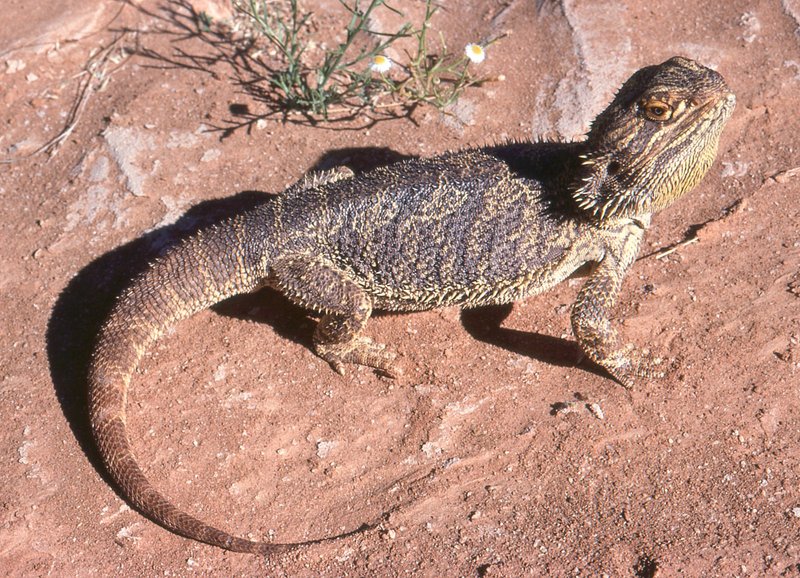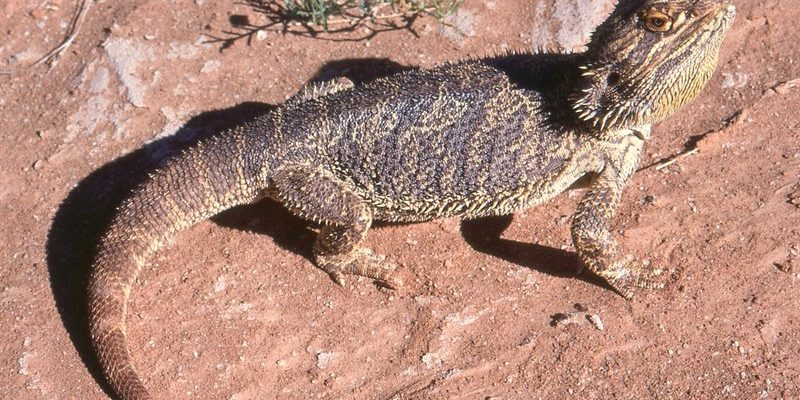
Imagine Australia as a giant playground for the bearded dragon, where they thrive in a variety of environments—from arid deserts to lush forests. Their ability to adapt makes them one of the most beloved reptiles around. But where exactly in the world do you find these little guys? Grab a coffee, and let’s take a leisurely stroll through their habitats and homes.
1. The Heart of Their Habitat: Australia
Bearded dragons hail primarily from Australia, where they inhabit various ecosystems. The majority of species, like the Central Bearded Dragon, are found in the eastern and central parts of the country. They enjoy warm, dry climates and can be spotted in open woodlands, scrublands, and even deserts.
Their natural behavior often involves basking on rocks or branches, where they can soak up the sun and keep a lookout for predators. You might even find them among grasslands as they scurry to catch insects. Such habitats are perfect for these lizards because they provide both food and shelter. Honestly, Australia is like their personal buffet, where they can feast on insects, leafy greens, and flowers.
2. Diverse Habitats Across Australia
Not all bearded dragons live in the same environment. Depending on the species, they’ve adapted to different habitats within Australia. For instance, the Eastern Bearded Dragon loves the coastal areas, thriving in forests and woodlands, while the Western Bearded Dragon prefers the drier, rugged terrains of the west.
You see, by moving between these habitats, bearded dragons can exploit various resources. In the moist regions, they might feast on a different variety of bugs than those in the arid deserts. It’s like having multiple dining options depending on where they decide to hang out. Here’s a quick overview of different species and their preferred environments:
- Central Bearded Dragon: Prefers dry deserts and open woodlands.
- Eastern Bearded Dragon: Enjoys coastal forests and woodlands.
- Western Bearded Dragon: Thrives in arid, rocky areas.
3. Popularity Beyond Australia: Global Spread
Thanks to their friendly disposition and manageable care requirements, bearded dragons have become popular pets worldwide. You might be wondering how they ended up in homes far from their native land. The truth is, breeders have been shipping them across the globe for years.
In the United States, Europe, and other parts of the world, people love keeping bearded dragons as pets. Many of them have become accustomed to living in cozy terrariums, mimicking their natural habitats. They thrive in environments that provide warmth, humidity, and ample opportunities for climbing and basking under a heat source. This means your pet bearded dragon can feel as comfortable lounging on a rock in your living room as it would in the Australian sun.
4. Bearded Dragons and Their Climate Preferences
Understanding the climate preferences of bearded dragons can help ensure they thrive in captivity. They are cold-blooded, meaning they rely on external heat sources to regulate their body temperature. In their natural habitats, they bask under the sun to absorb warmth.
In the wild, daytime temperatures can range from 80°F to over 100°F (27°C to 38°C). At night, temperatures can drop to around 60°F (15°C). Replicating this temperature range is essential for a happy and healthy pet. Here’s a quick breakdown of what to consider:
- Daytime: Maintain a basking spot of 95°F to 105°F.
- Nighttime: Allow temperatures to drop to 65°F to 75°F.
- Humidity: Keep humidity low, around 30% to 40%, to mimic their arid home.
5. Conservation and Threats to Bearded Dragons
Despite their popularity, bearded dragons face various threats in the wild, including habitat loss and climate change. As their natural habitats are destroyed for agriculture and urban development, their populations can decline.
In regions of Australia, conservation efforts aim to protect these wonderful creatures and their environments. Public awareness and responsible ownership are vital to ensuring future generations can enjoy them. Educating yourself about these issues can make you a more responsible pet owner, helping you contribute positively to their conservation.
6. Captive Breeding and Its Importance
Captive breeding plays a crucial role in preserving bearded dragon populations. By breeding them in controlled environments, we can reduce the pressure on wild populations while simultaneously providing healthy pets.
Reputable breeders focus on health, temperament, and genetic diversity, ensuring that the pets remain vibrant and healthy. This is important because it helps protect the genetic traits that make these lizards so special while offering enthusiasts a chance to bring a part of Australia into their homes.
7. Where to Find Bearded Dragons for Adoption or Purchase
If you’re considering bringing a bearded dragon into your home, it’s essential to find a responsible source. Look for reputable breeders or local pet stores that prioritize animal welfare. You can also check rescue organizations that specialize in exotic pets; they often have bearded dragons in need of loving homes.
Before making a decision, make sure you do your homework. Ensuring you’re adopting or purchasing from a trustworthy source can help you avoid issues down the road and provide the best possible home for your new scaly friend.
8. Final Thoughts on Bearded Dragons’ Global Presence
Bearded dragons are captivating creatures with a global presence that extends way beyond Australia. Their unique adaptations, friendly nature, and popularity as pets make them special members of the reptile family. Understanding where they come from and how they thrive gives us insights into their care and the importance of preserving their habitats.
So, if you ever find yourself pondering the adventures of these fascinating lizards, remember—each bearded dragon carries a piece of Australia with them, no matter where they roam. Whether you’re considering one as a pet or just fascinated by their world, you’re now better equipped to appreciate the journey of these remarkable reptiles.

